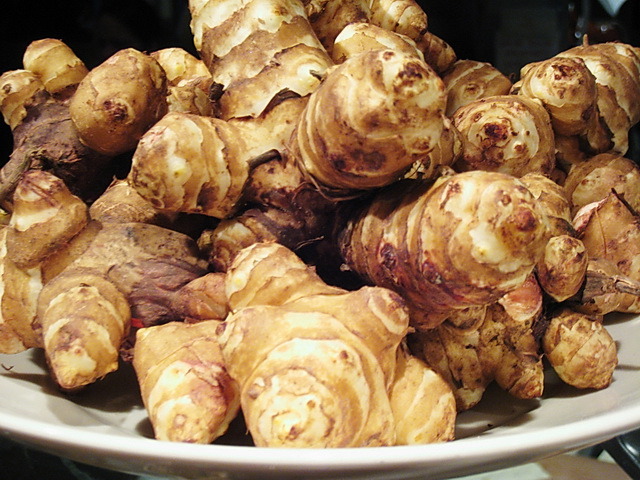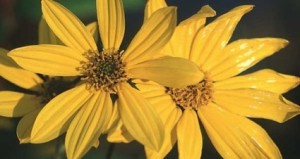There used to be a huge patch of Jerusalem Artichokes here in Central Florida beside the Interstate. Now they’re under a new exit ramp, and that was the only place I saw them in Central Florida although they grow in northern Florida and almost all of North America except New Mexico, Arizona and Nevada.
In fact, my mother as a kid in northern Vermont used to tell about coming home after school in the fall and stopping in the kitchen only long enough to grab a salt shaker. Then she and her two brothers would run out and dig up Jerusalem Artichokes and eat away. She did it because her mother did it and her grandmother did.
Of course, Jerusalem artichokes have nothing to do with Jerusalem or with artichokes, being in the sunflower family. They are quite easy to raise and one fascinating element about them is their carbohydrate is “inulin.” Diabetics can eat it without affecting their blood sugar. When the plant was first discovered by Europeans they called it Girasole, the Italian word for turning to the sun, which some in the family do. Over time Girasole got mangled into Jerusalem. Recently they have been called sunchokes, a more fitting and sorter name.
The artichoke part of the Jerusalem Artichoke’s name comes from the taste of its edible tuber. Samuel de Champlain, the French explorer, sent the first samples of the plant to France, noting that its taste was similar to an artichoke. The word artichoke comes form the Arab phrase Ardi-Shoki which means “ground thorny.” The roots are very lumpy. The scientific name is quite easy to sort out: Helianthus tuberosus. (hee-lee-AN-thus tew-ber-OH-sus.) Helianthus means sunflower and tuberosus means having tubers.
Jerusalem artichokes are about 80% water, 15% protein, 1% fat, 60% inulin, 4% fiber and 5% ash, 0.099% phosphorus, 0.023%, 3.4 mg iron with traces of aluminum, chlorine, iodine, magnesium, potassium, sulphur, zinc, vitamins B and C.
Jerusalem artichoke root is also used to produce a spirit called “Topinambur” “Topi” or “Rossler.” Topinambour is the French word for Jerusalem Artichokes and comes from a tribe of Brazilian Indians who were taken to France about the same time as the root.
Green Deane’s “Itemizing” plant profile
IDENTIFICATION: Large, gangly, multi-branched plant to 10 feet tall, rough, sandpapery leaves and stems. Many yellow flowers. Leaves ovate, broadest below the middle, 5-10 inches long. Flower 3-4 cinches across with 10-20 bright yellow petals
TIME OF YEAR: Showy blossoms in late summer and early fall. Pick tubes two weeks after flowers fade.
ENVIRONMENT: Almost any soil but the softer, fertile and friable the better. Grow your own! By some from the grocery story and plant in spring, even in pots.
METHOD OF PREPARATION: Raw or cooked or pickled. Tedious to clean, and overcooks easily. Excellent grated raw into salads, boiled lightly similar to potatoes, will make make French fries and creamy soup. Can be roasted but eat immediately after cooking as they grow mushy in a few minutes.



